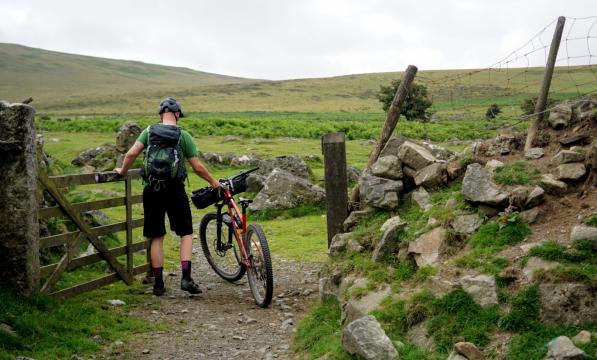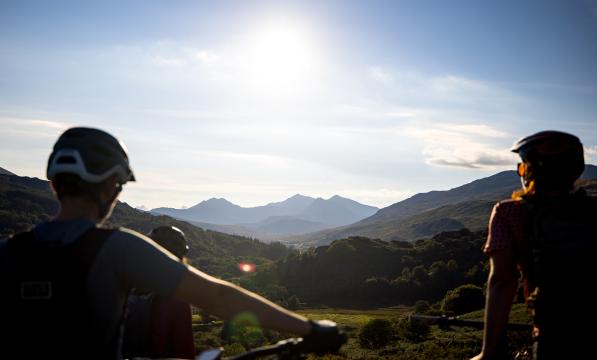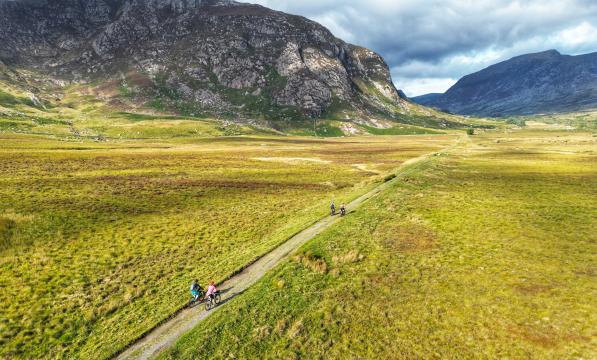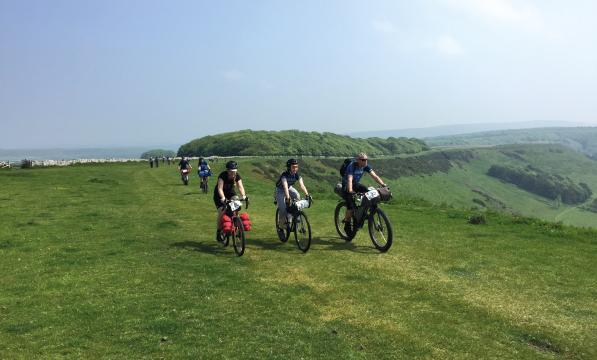How hard is the Traws Eryri bikepacking route?

First, let’s take a look at the stats. Traws Eryri spans the national park covering 225km (140 miles). With a suggested itinerary of four days, you’re looking at around 56km (35 miles) per day. That’s much shorter than King Alfred’s Way, West Kernow Way and Rebellion Way, so it doesn’t sound too bad, does it?
There’s one important statistic missing, though: elevation gain. Home to Wales’s highest peak, Yr Wyddfa, or Snowdon, flat cycling is rare in the national park. Over the four stages you’ll climb no fewer than 4,710 metres (15,450 feet). That’s equivalent to riding up Yr Wyddfa from sea level to summit four times!
There’s also the terrain to factor in. Though North Wales boasts some sublime tarmac, Traws Eryri doesn’t solely stick to it; instead venturing off onto rocky doubletracks, flowing gravel fire roads, some smooth ribbons of singletrack, and a few grassy bits in between. When the surface under tyre is anything but smooth, it’s going to take more effort to cover.
How technical is Traws Eryri?

This is one thing I’m sure many people will wonder when weighing up whether a jolly across the mountains of Eryri is for them. Mountain bikes come highly recommended for this route, so you may be wondering why. ‘Could I do it on my gravel bike’ is a common question.
While a mountain bike is certainly the most suitable bike for riding across a landscape as vertiginous as this, it’s not essential in terms of the technicality of the route.
North Wales does has some world-class mountain biking when it comes to steep, rooty and rocky trails, home to the Atherton family and Dyfi Bike Park among many others. For this long-distance route, though, scenery and the sense of journey has been prioritised over adrenaline-peaking descents at the bike park.
Just as well, as tackling some of the more techy stuff while loaded up with bikepacking bags can be pretty sketchy.
Having said that, the route does pass four trail centres, so if you’re up for a bit extra exploring and peppering in some more technical hand-built trails along the way, there’s nothing stopping you stowing your kit for an hour or two and taking in some laps of Mach, Coed y Brenin, Penmachno and Gwydir Forest.
What level of fitness will I need to ride Traws Eryri?

While Traws Eryri isn’t the most technical mountain bike route out there, it certainly doesn’t skip the hills. You’ll need a good level of fitness to power yourself up them, as well as stamina to keep going on incline after incline. Bar a serene pedal along the Mawddach Trail, there’s almost no flat riding on Traws Eryri.
The good news is that you can adapt the route to ride in as many – or as few – days as you like to suit your fitness level. The fittest riders will tackle the route in as little as three days or perhaps just two, while those looking to take a more leisurely approach will plan for four, five or more days on the route.
What bike is best for Traws Eryri?

Undoubtedly, a mountain bike is best for riding Traws Eryri. The wide-ranging gearing is the most handy part here, allowing you to winch up the many steep inclines that you’ll face along the route.
Secondly, wider tyres will allow you to take on the rougher descents (and a few climbs) with much more confidence. Finally, a bit of suspension will make things more comfortable for you over multiple days on the bike, as well as aiding grip.
While you technically can ride Traws Eryri on a gravel bike, you’re likely to be undergeared – especially if loaded up with bikepacking bags and camping kit. Some of the descents are rocky and loose, so wider tyres are much better. If riding a gravel bike, you’ll probably have to walk a few sections which are a little more technical, though thankfully they’re quite short.
What about e-bikes for Traws Eryri?
There are a number of great adventure hubs and businesses along Traws Eryri which can make riding the route on an e-bike possible. Just be careful to research your charging points in advance of riding the route, and consider taking range-extender batteries if you have them. Remember that in this vertiginous landscape your battery may drain faster than you’re used to.
Ready to give it a whirl? Check out the route, our guide to MTB bikepacking setup and consider buying or downloading our route guide for more information.






